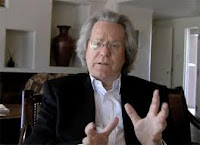Be careful about reading health books. You may die of
a misprint.
Mark Twain
The more scientists learn, the better trained medical
doctors become and the better the instruments invented for coming up with early
diagnoses and treatment, the greater the probability that people who take
reasonably good care of themselves are going to live into old age. Statistics
are showing that it’s happening already so I thought I’d write a blog post as
one who has a little experience.
I think that after you get past 85 you can start to consider yourself old aged. That was the year I began to feel ‘old’ as I was realizing things about myself I wouldn’t have even thought of when I was young. I found that gradually it was becoming more difficult to move, energies were becoming more limited and to even run out some days, and sleeping was taking up more time.
 I am aware that everyone is different but when I was young, I
used to group all old people together and think that you could pretty well
write them off by the time they were in their 80’s. After all I was mostly conforming
to the attitudes that our North American culture has. Approaching 88, I behave
as if I’m not to be ‘written off’ and truth be told I find most people if not
respectful, are very solicitous and helpful. I am all for the way that Native
people and those in Asian cultures treat their elders - with respect. Still, I think
respect must be earned.
I am aware that everyone is different but when I was young, I
used to group all old people together and think that you could pretty well
write them off by the time they were in their 80’s. After all I was mostly conforming
to the attitudes that our North American culture has. Approaching 88, I behave
as if I’m not to be ‘written off’ and truth be told I find most people if not
respectful, are very solicitous and helpful. I am all for the way that Native
people and those in Asian cultures treat their elders - with respect. Still, I think
respect must be earned.I didn’t ever expect I would reach this age – I’ve had more that my fair share of health problems, mostly heart and arterial problems that not many years ago would have killed me. Lately it’s mostly my stomach that has been giving me grief - as I know it does with in many others my age. Winston Churchill must have been one of us – he is quoted as saying ‘Don't worry about avoiding temptation. As you grow older, it will avoid you’. I’ve been told by my health food consultant however, that eating fermented foods is very good for old people so I have started eating sauerkraut, more cheeses, yoghurt and kefir, sprouted grains, and best of all, beer and wine!
The most important things in my life, besides meaningful
relationships, have always been time, energy to do what I wanted. And what I
want is like an unquenchable thirst to continue to learn and understand. I
have lived through a flowering of science that continues to give insights into our
roots as humans that run deep into the evolutionary millennia that have shaped
us. So one of the best things about old age I find is that less and less is
expected of me so I have more time. At first I felt guilty about not helping
with household chores so much but I have been told by my daughters, wise souls,
that I should convert my guilt into gratitude and give others the ‘pleasure’ of
serving me.
Truth be told, I find that the older I get the sweeter life
becomes. This past summer shimmers in my memory because my senses seemed heightened.
I was very aware of bird songs that seemed so melodious, flowers were a delight to the eye, sparkling and rippling water seemed more amazing–
all this probably because unconsciously I realized there is less future time to
enjoy them. That makes me live in the moment more, realizing fully that it is always
now. Rie











